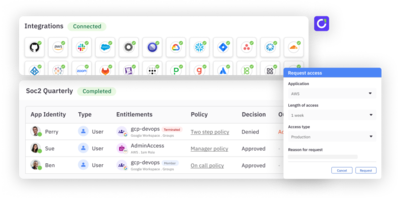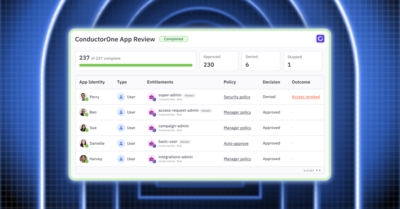I was on a call with a potential customer recently, and they remarked “there’s an App for that" – in the context of their ever expanding SaaS portfolio – and it really stuck with me. The Software as a Service (SaaS) revolution makes it possible for companies to find specialized solutions that cater to their specific needs, changing the way businesses operate. Many different applications have popped up, aiming to help businesses become more efficient and successful – “there’s an app for that” has become the new norm.
These specialized tools allow companies to simplify processes and focus on their strengths. Businesses can now use innovative solutions without needing expensive in-house alternatives. Applications cover a wide range of functions, such as customer relationship management, advanced analytics, and niche services like employee engagement and virtual event platforms.
As companies adopt these tools, IT and security teams are faced with the task of managing a growing software ecosystem. They must tackle issues like security, compliance, risk, governance, and data privacy while also encouraging the use of transformative technology.
To navigate this terrain, IT and security teams should adopt a “there’s an app for that” attitude. They must become facilitators, helping businesses find and use the best solutions. This shift in focus demands learning new skills and using automation tools to manage and secure the growing SaaS ecosystem.
Automation is key to finding this balance. Using automation tools for tasks such as vulnerability scanning, access management, and policy enforcement allows IT and security teams to stay on top of SaaS adoption without sacrificing security or compliance. Automation reduces the risk of human error and frees up resources for strategic initiatives and addressing major risks.
Building a collaborative culture among IT, security, and business teams is essential. By working together to identify, evaluate, and implement the best SaaS applications, organizations can make sure the tools they use align with their goals and address security and compliance issues.
Communication is what holds this process together. IT and security teams should keep an open dialogue with business units, informing them about potential risks and offering guidance on navigating the complex SaaS world. This collaborative approach encourages shared ownership and responsibility for the company’s digital transformation.
So, let’s adopt the idea that there’s probably an app for that and trust IT and security teams to lead the way. By emphasizing automation, collaboration, and communication, IT and security professionals can protect the organization and serve as catalysts for its digital transformation.





